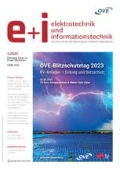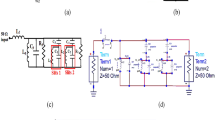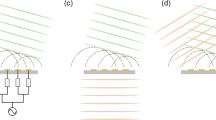Abstract
The rapidly evolving trend for increased data rates in today’s and future cellular communication systems poses extreme difficulties for developers of cellular transceivers. A multitude of standards ranging from legacy 2G to the upcoming, yet to be defined, 5G needs to be supported across a broad but fragmented frequency spectrum. Higher data throughput necessitates higher bandwidths, increased number of aggregated carriers, and more complex of modulation schemes. Capable transmitters must exhibit highest in-band performance, e.g. linearity and error vector magnitude. Simultaneously, out-of-band performance, like noise and spurious emissions, is crucial to co-exist with other wireless channels, such as the transceiver’s receivers and other participants. While a “more of everything” is expected, competitive solutions for the wireless market require a constant decrease in silicon area, bill of materials, and especially power consumption.
This paper presents the evolution of integrated transmitter architectures facing the above challenges: From conventional analog direct conversion transmitters to fully-digital direct modulation RF transmitters, challenges and benefits are highlighted, presenting modern architectures that benefit from the most advanced technology nodes while supporting upcoming 5G cellular wireless communications.
Zusammenfassung
Der sich schnell entwickelnde Trend zu höheren Datenraten heutiger und zukünftiger Mobilfunksysteme stellt Entwickler von Mobilfunk-Transceivern vor extreme Schwierigkeiten. Eine Vielzahl von Standards, ausgehend von 2G bis hin zu dem bevorstehenden, noch zu definierenden 5G-Standard, muss in einem breiten, aber stark fragmentierten Frequenzspektrum unterstützt werden. Um einen höheren Datendurchsatz zu erreichen, werden höhere Bandbreiten, mehr aggregierte Träger und komplexere Modulationsverfahren benötigt, was jedoch höchste Anforderungen an die In-Band-Performance der Transmitter bedeutet, z. B. Linearität und EVM. Gleichzeitig ist die Out-of-Band-Performance, wie Rauschen und Störemissionen, entscheidend für die Koexistenz mit anderen Funkkanälen und -technologien, wie z. B. dem eigenen Empfänger sowie anderer Teilnehmer. Während immer mehr von allem erwartet wird, erfordern wettbewerbsfähige Lösungen für den Wireless-Markt eine stetige Reduktion der Siliziumfläche, Anzahl der externen Bauteilen und vor allem des Stromverbrauchs.
Dieser Artikel stellt die Entwicklung integrierter Senderarchitekturen vor, die den oben genannten Herausforderungen gerecht werden: von konventionellen analogen Homodyn-Transmittern zu voll digitalen HF-Direktmodulationssendern. Herausforderungen und Vorteile von modernen Architekturen werden besprochen, die von modernsten Fertigungstechnologien profitieren und die kommende 5G-Mobilfunk-Generation unterstützen.



















Similar content being viewed by others
Notes
The actual bandwidth expansion that needs to be considered depends on the type of signal and tolerable errors resulting in potential noise and EVM degradation.
References
Volder, J. E. (2000): The birth of cordic. J. VLSI Signal Process. Syst. Signal Image Video Technol., 25(2), 101–105.
Ibrahim, M. A. (2015): The Polar Transmitter: Analysis and Algorithms. Ph.D. thesis, Institut für Signalverarbeitung und Systemtheorie der Universität Stuttgart.
Rofougaran, A., Rael, J., Rofougaran, M., Abidi, A. (1996): A 900 MHz CMOS LC-oscillator with quadrature outputs. In 1996 IEEE international solid-state circuits conference. Digest of TEchnical papers, ISSCC (pp. 392–393). New York: IEEE Press.
Fang, S. J., Bellaouar, A., Lee, S. T., Allstot, D. J. (2005): An image-rejection down-converter for low-IF receivers. IEEE Trans. Microw. Theory Tech., 53(2), 478–487.
Kalcher, M., Gruber, D., Ponton, D. (2016): Self-aligned open-loop local quadrature phase generator. In ESSCIRC conference 2016: 42nd European solid-state circuits conference (pp. 351–354). New York: IEEE Press.
Boos, Z., Menkhoff, A., Kuttner, F., Schimper, M., Moreira, J., Geltinger, H., Gossmann, T., Pfann, P., Belitzer, A., Bauernfeind, T. (2011): A fully digital multimode polar transmitter employing 17b RF DAC in 3G mode. In 2011 IEEE international solid-state circuits conference (pp. 376–378). New York: IEEE Press.
Razavi, B. (1995): Basic principles of digital-to-analog conversion. In Principles of data conversion system design (pp. 45–78). New York: Wiley/IEEE Press.
Van den Bosch, A., Borremans, M. A. F., Steyaert, M. S. J., Sansen, W. (2001): A 10-bit 1-GSample/s Nyquist current-steering CMOS D/A converter. IEEE J. Solid-State Circuits, 36(3), 315–324.
Bastos, J., Marques, A. M., Steyaert, M. S. J., Sansen, W. (1998): A 12-bit intrinsic accuracy high-speed CMOS DAC. IEEE J. Solid-State Circuits, 33(12), 1959–1969.
Fulde, M., Kuttner, F. (2015): In Digital enhanced transmitter concepts for nanometer-CMOS technologies (pp. 253–267). Berlin: Springer.
Yoo, S. M., Walling, J. S., Woo, E. C., Jann, B., Allstot, D. J. (2011): A switched-capacitor RF power amplifier. IEEE J. Solid-State Circuits, 46(12), 2977–2987.
Trampitsch, S., Markovic, J., Oßmann, P., Fritzin, J., Zaleski, J., Mayer, C., Fulde, M., Pretl, H., Springer, A., Huemer, M. (2017): A nonlinear switched state-space model for capacitive RF DACs. IEEE Trans. Circuits Syst. I, Regul. Pap., 64(6), 1342–1353.
Passamani, A., Ponton, D., Thaller, E., Knoblinger, G., Neviani, A., Bevilacqua, A. (2017): 13.9 A 1.1V 28.6dBm fully integrated digital power amplifier for mobile and wireless applications in 28nm CMOS technology with 35% PAE. In 2017 IEEE international solid-state circuits conference (ISSCC) (pp. 232–233). New York: IEEE Press.
Passamani, A., Ponton, D., Knoblinger, G., Bevilacqua, A. (2014): A linear model of efficiency for switched-capacitor RF power-amplifiers. In 2014 10th conference on Ph.D. Research in microelectronics and electronics (PRIME) (pp. 1–4). New York: IEEE Press.
Deng, Z., Lu, E., Rostami, E., Sieh, D., Papadopoulos, D., Huang, B., Chen, R., Wang, H., Hsu, W. H., Wu, C. H., Shanaa, O. (2016): 9.5 A dual-band digital-WiFi 802.11a/b/g/n transmitter SoC with digital I/Q combining and diamond profile mapping for compact die area and improved efficiency in 40nm CMOS. In 2016 IEEE international solid-state circuits conference (ISSCC) (pp. 172–173). New York: IEEE Press.
Fulde, M., Belitzer, A., Boos, Z., Bruennert, M., Fritzin, J., Geltinger, H., Groinig, M., Gruber, D., Gruenberger, S., Hartig, T., Kampus, V., Kapfelsberger, B., Kuttner, F., Leuschner, S., Maletz, T., Menkhoff, A., Moreira, J., Paussa, A., Ponton, D., Pretl, H., Sira, D., Steinacker, U., Stevanovic, N. (2017): 13.2 A digital multimode polar transmitter supporting 40MHz LTE carrier aggregation in 28nm CMOS. In 2017 IEEE international solid-state circuits conference (ISSCC) (pp. 218–219). New York: IEEE Press.
Trampitsch, S., Gruber, D., Lunglmayr, M., Thaller, E., Huemer, M. (2016): Digital compensation of DC-DC converter voltage ripple for switched-capacitor power amplifiers. In 2016 14th IEEE international new circuits and systems conference (NEWCAS) (pp. 1–4). New York: IEEE Press.
Buckel, T., Mayer, T., Bauernfeind, T., Tertinek, S., Wicpalek, C., Springer, A., Weigel, R., Ussmueller, T. (2017): A highly reconfigurable RF-DPLL phase modulator for polar transmitters in multi-band/multi-standard cellular RFICs. In 2017 IEEE radio frequency integrated circuits symposium (RFIC) (pp. 104–107).
Author information
Authors and Affiliations
Rights and permissions
About this article
Cite this article
Kalcher, M., Fulde, M. & Gruber, D. Fully-digital transmitter architectures and circuits for the next generation of wireless communications. Elektrotech. Inftech. 135, 89–98 (2018). https://doi.org/10.1007/s00502-017-0573-4
Received:
Accepted:
Published:
Issue Date:
DOI: https://doi.org/10.1007/s00502-017-0573-4




